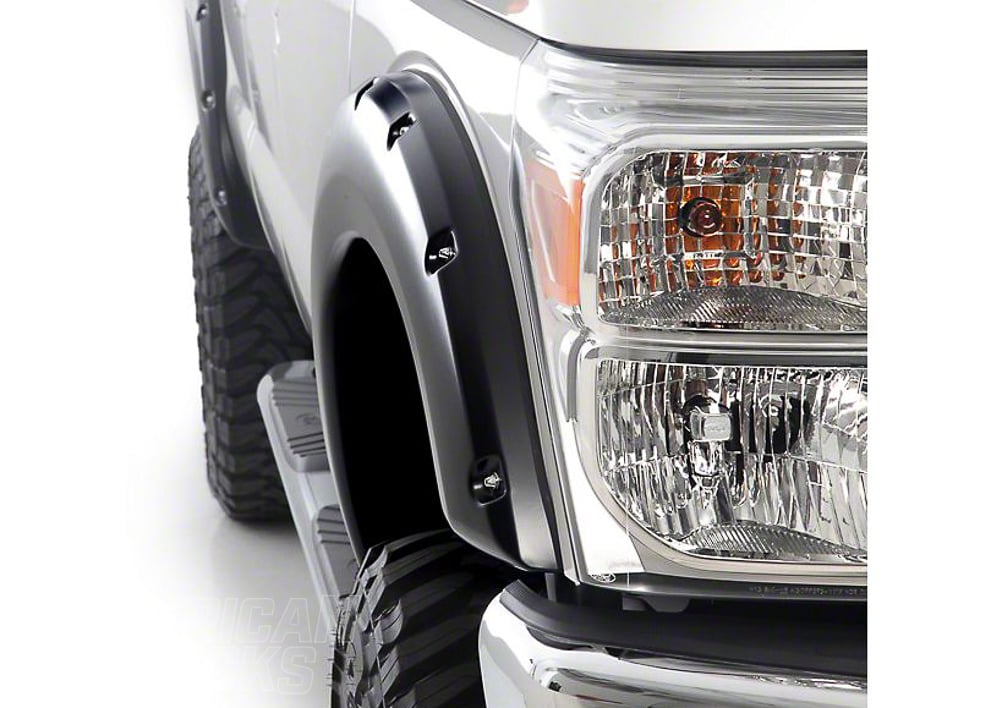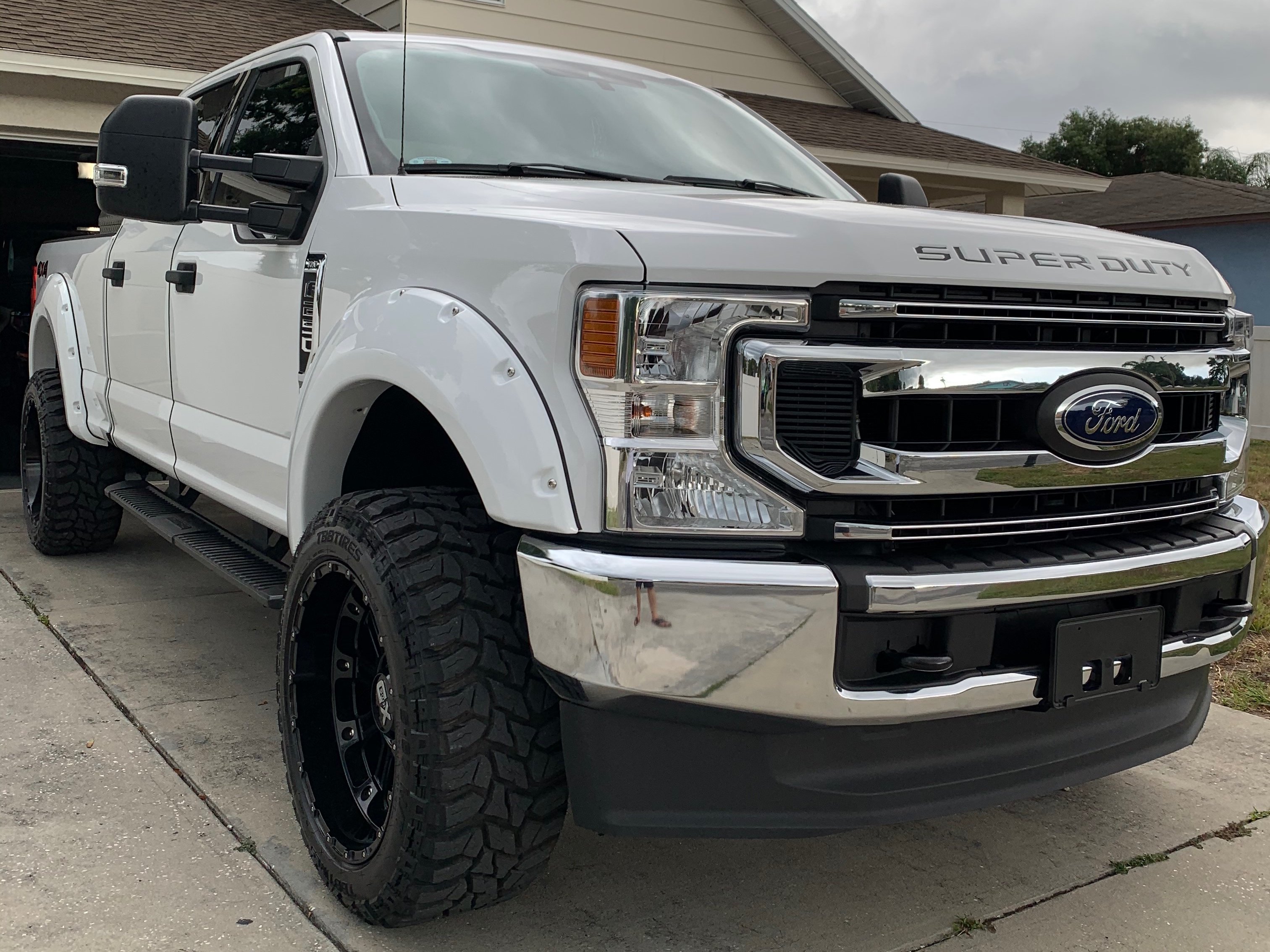There are plenty of modifications you will make to your F-250 that will warrant the use of other mods. Cold-air intakes work best with tuners; a lift kit will drive the urge to fit larger wheels; and aftermarket lights will warrant the use of a more powerful alternator. The list keeps going and it’s very easy to find yourself in a giant rabbit hole. Perhaps the one thing you should not forget to do is set your F-250 up with fender fares when considering wider wheels and tires.
Table of Contents
- Factory Fender Flares
- Types of Aftermarket Fender Flares
- How Fender Flares Allow Owners to Use Wider and/or Taller Tires
- Selecting the Right Flares for Your Tires
- Differing Materials for Flares
- F250 Fender Flares: Installation
Shop F250 Fender Flares
Fender flares serve a couple of purposes. The main one being allowing for wider tires by keeping on the better side of the law. The second is more robust flares can serve as protection while at the sketchier job sites and navigating the great outdoors. Finally, fender flares simply give your F250 a more intimidating presence.
